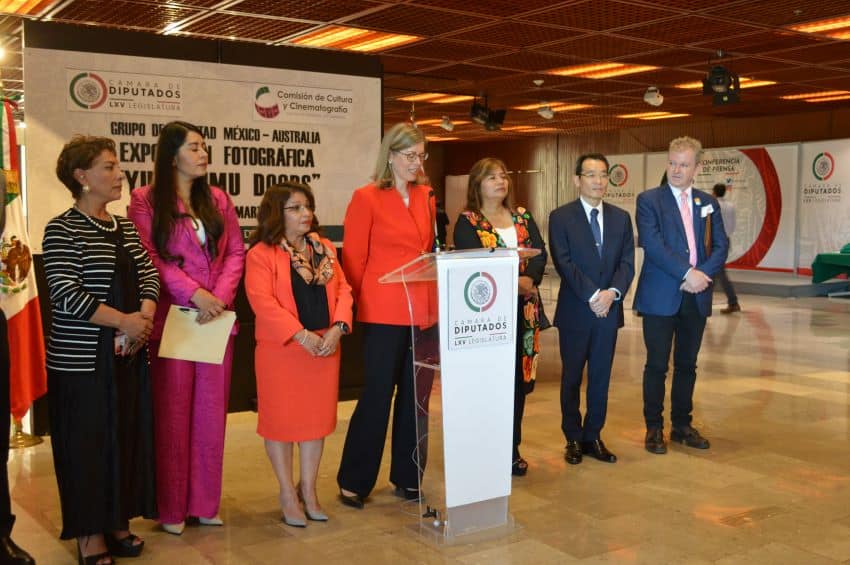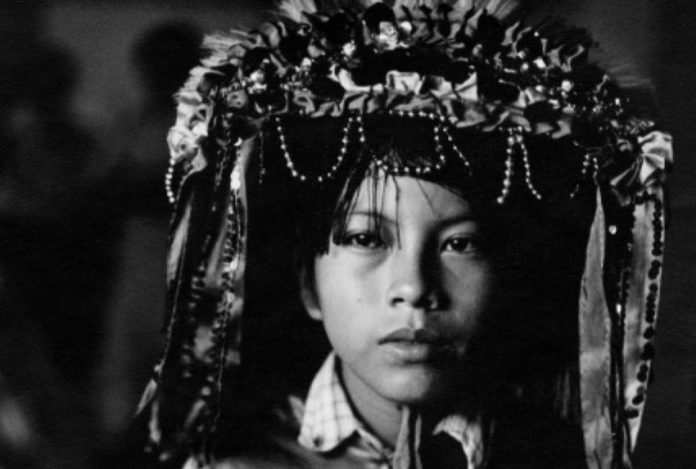How did two countries figure out that harnessing the power of Indigenous culture on opposite sides of the Pacific is perfect for Mexican-Australian relations?
But as Mexican Secretary of Culture Alejandra Frausto Guerrero notes, “The best ambassador that we have outside the country is our culture.”
The demographic basis of Indigenous diplomacy
Few countries are as rich in Indigenous cultures as Mexico or Australia, and both nations are legally committed to their preservation and ancestral rights in the 21st century.
Mexico has 68 recognized Indigenous ethnicities, grouped primarily by language. The largest of these are Mesoamerican and speak varieties of language families including Nahuatl, Maya, Zapotec, Mixtec, Mazatec, Otomí and Totonac.
All of Mexico’s Indigenous peoples struggle with issues like language loss and political and economic marginalization. As younger generations have sought to integrate into Mexico’s dominant modern society, cultural erosion has also become a pressing concern for these communities.
Across the Pacific in Australia, census data shows that over 160 Indigenous languages are spoken at home. As in Mexico, however, language does not necessarily mean ethnicity, as other factors like history and cultural practices come into play.
Indigenous Australians today face many of the same challenges as those in Mexico do. The Australian Human Rights Commission recognizes that “Aboriginal and Torres Strait Islander people continue to be one of the most vulnerable groups in Australia.”
On the positive side, sociopolitical changes in both countries in the 20th century led to a greater appreciation for original peoples, both historically and as part of Mexico’s and Australia’s modern cultural identities. Although Indigenous people in Mexico and Australia remain highly vulnerable, both countries have implemented social and political efforts to conserve these cultures and protect their social and economic rights.

Growth of Mexico-Australia relations
While both are home to ancient cultures, formal relations between the two countries date back only to 1966. Both nations are members of the Asia-Pacific Economic Cooperation and other intergovernmental organizations.
Australian Ambassador to Mexico Rachel Moseley notes that these ties have grown significantly in the past decade or so, with the Australian embassy’s activities in this country doubling. Mexican federal deputy Carolina Dávila Ramírez notes that “We share a profound pride in our roots which have enriched our identity, social reality and worldview.”
This pride was further prompted by the two countries’ growing economic ties. In 2022, trade between Mexico and Australia totaled almost US $2 billion, with Mexico exporting about $1.2 billion of automobiles and parts and importing about $8 million in grain and other agricultural products.
Cultural exchanges have been fairly typical, with Mexico sponsoring exhibitions of work by Frida Kahlo and Diego Rivera and Mesoamerican artifacts. It also sends thousands of students to study at Australian universities.
But in 2020, the two countries signed a unique memorandum of understanding (MOU), the Memorandum of Understanding Between the National Institute of Indigenous Peoples of the United Mexican States and the Australian Institute of Aboriginal and Torres Strait Islander Studies of the Commonwealth of Australia. This document is based specifically on the two countries’ Indigenous populations, a diplomatic angle few countries could ever contemplate.
What the Memorandum of Understanding does
Foremost, the MOU recognizes the “integral place of Indigenous Peoples historically and currently in both countries… as well as their contribution to the diversity and richness of our respective cultures.”
The exchange is primarily managed by the federal-level agencies dedicated to Indigenous affairs in both countries. In Australia, that entity is called the Australian Institute of Aboriginal and Torres Strait Islander Studies (AIATSIS). In Mexico, it is the National Institute of Indigenous Peoples (INPI). In addition to working to conserve knowledge of their respective Indigenous peoples and their material cultures, both institutes research and document these peoples’ modern realities.
One of the first activities that resulted from the MOU was an exchange of best practices between the two agencies. Through a series of online and presential exchanges of experts in 2023, INPI head archivist Octavio Murillo was pleased to discover that although Mexico does not have anywhere near the resources that Australia has, “We realized that many of the processes we do here in Mexico are very similar to those in Australia… there are the same standards for digitalization, for example. Even though we are not a rich institution, we already have what we need to do a good job.”
Sharing knowledge with the public in both countries
The other major INPI-AIATSIS initiative so far is the staging of various exhibitions in museums and other prominent locations in both countries to educate their respective populations about Indigenous peoples on the other side of the Pacific Ocean.
In 2022, the Embassy of Mexico in Australia and AIATSIS presented “Portraits of Indigenous Mexico” at the Australian National University in Canberra, introducing Australians to the wide diversity of Indigenous and Afro-Mexican cultures. The exhibition featured work by famous Mexican photographers including Nacho López, Miguel Bracho and Leticia Olvera.
In Mexico, there have been two important exhibits of Indigenous Australian culture. Last August, the INPI-run Indigenous Museum in Mexico City hosted a documentary project “After 200 years: Photographic Essays of Aboriginal and Islander Australia” which began in 1988 and was updated in recent years. A month later, the Chamber of Deputies hosted the traveling exhibition “ Yuendumu Doors,” a collection of classroom doors painted in 1984 by elders of the Warlpiri people to keep the first generation of schoolchildren educated in Western schools connected to their ancestral culture.
The MOU stipulates much more than talks between experts and cultural exhibitions. It also calls for exchanges among the Indigenous people of both countries in areas like business and higher education. This year, the Australian government named Goreng Goreng public servant Justin Mohamed its inaugural Ambassador for First Nations People. As ambassador, he is tasked with working on international issues as they relate to Indigenous Australia, which includes establishing a University of Indigenous Languages in collaboration with Mexico.
Diplomatic impact
The initiatives that have come out of the AIATSIS-INPI memorandum of understanding have served to raise Indigenous historical and cultural awareness, not just as internal affairs but as international ones as well.
Notable at the two exhibitions in Mexico were the similarities in history and cultures of two sets of peoples separated by a vast ocean. There may be several conclusions to draw from that, but this global perspective is significant and needs to be explored.
Ambassador Moseley notes that Indigenous Australians now have an impact on how their country interacts with the rest of the world. “We see a First Nations approach to foreign policy as one that project our modern diversity… [t]his is particularly relevant in Mexico, which also has a rich indigenous history dating back tens of thousands of years,” She sees Indigenous viewpoints as particularly helpful with environmental issues, including the international management of natural resources.
There is still much more work to be done, including expert and student exchanges, their continued participation in the Indigenous Language Institute together, and even exchanges among Indigenous small business owners. But the basic groundwork has been laid for long-term cooperation in Indigenous issues.
Leigh Thelmadatter arrived in Mexico over 20 years ago and fell in love with the land and the culture in particular its handcrafts and art. She is the author of Mexican Cartonería: Paper, Paste and Fiesta (Schiffer 2019). Her culture column appears regularly on Mexico News Daily.
